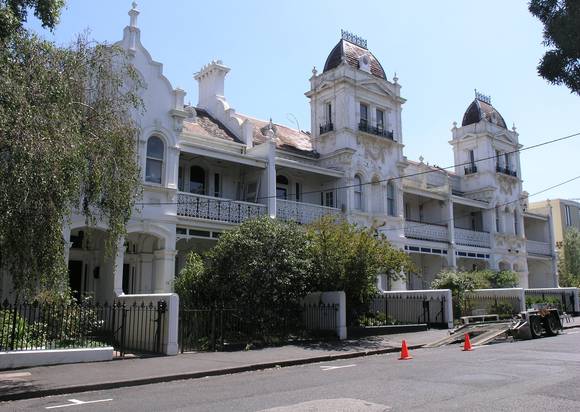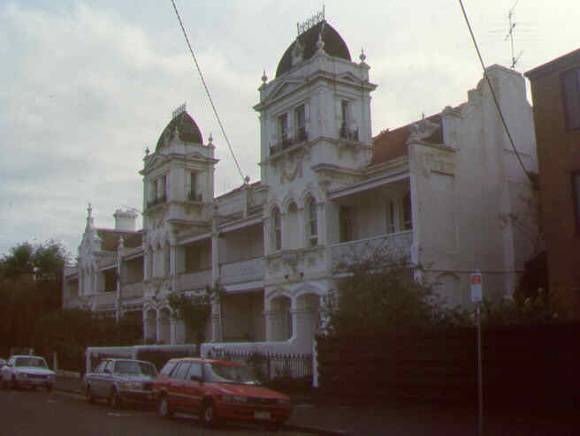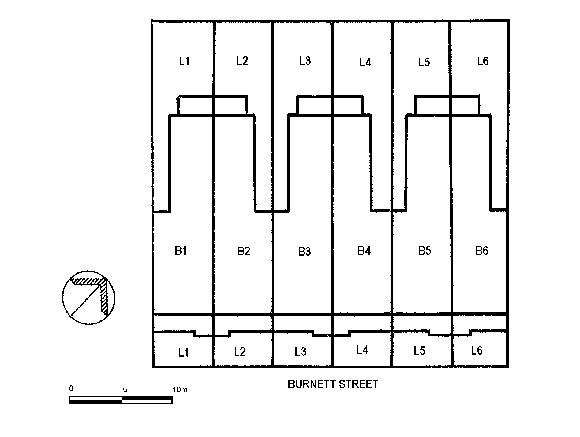| Back to search results » | Back to search page » |
|
MARION TERRACE
Location14-24 BURNETT STREET ST KILDA, PORT PHILLIP CITY
File Number605393LevelRegistered |
|
Statement of Significance
What is significant?
Marion Terrace was built in 1883 as an investment for merchant James Roberts. It originally comprised eight terraces; two of the houses have been demolished. The architect is unknown, although Nahum Barnett's name appears as an agent for the owner on the 1899 MMBW drainage plan, suggesting his involvement in the design. Another possible architect is Michael Egan who is linked to another commission for James Roberts.
Marion Terrace is a rendered brick terrace of six houses with a strong French Second Empire influence. It has an unusual pavilion arrangement with two central three-storey towers, surmounted by curved mansard roofs with cast iron cresting. A Dutch gabled pavilion is at one side of the terrace; the matching gable at the other end was demolished along with the two houses. The towers and gabled section display classically inspired stucco ornament including urns, festoons, pediments, niches and string courses. Arched openings display vermiculated keystones.
How is it significant?
Marion Terrace is of architectural and historical significance to the state of Victoria.
Why is it significant?
Marion Terrace is of architectural significance as a unique example in Victoria of a terrace influenced by the French Second Empire style. The terrace displays all the important features of the style with its composition, symmetry, exuberant facade decoration, and prominent mansard roofed towers, flanking pavilions and recessed residences. Marion Terrace is one of a small group of important, highly distinctive terraces in Melbourne including Royal Terrace, Fitzroy; Rochester Terrace, Albert Park; and Canterbury Terrace, East Melbourne.
Marion Terrace is of historical significance for its associations with the 1880s boom in Melbourne. Built as an investment for merchant James Roberts, the terrace also has historical associations with other residents who were prominent players in the boom years including Solomon de Beer and Emmanuel Levy. The flamboyant terrace symbolises the prosperity and confidence of the boom years and illustrates the lifestyle of wealthy Melburnians in the latter decades of the 19th century.
Group
Residential buildings (private)
Category
House






